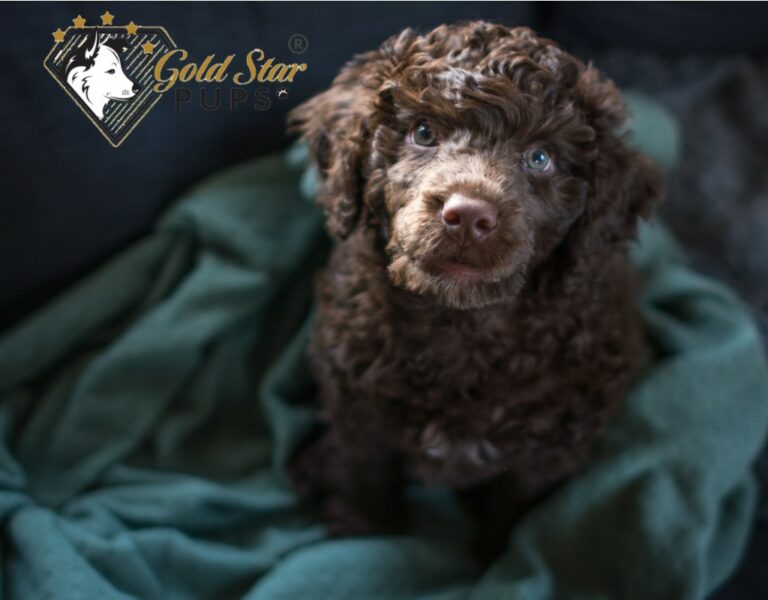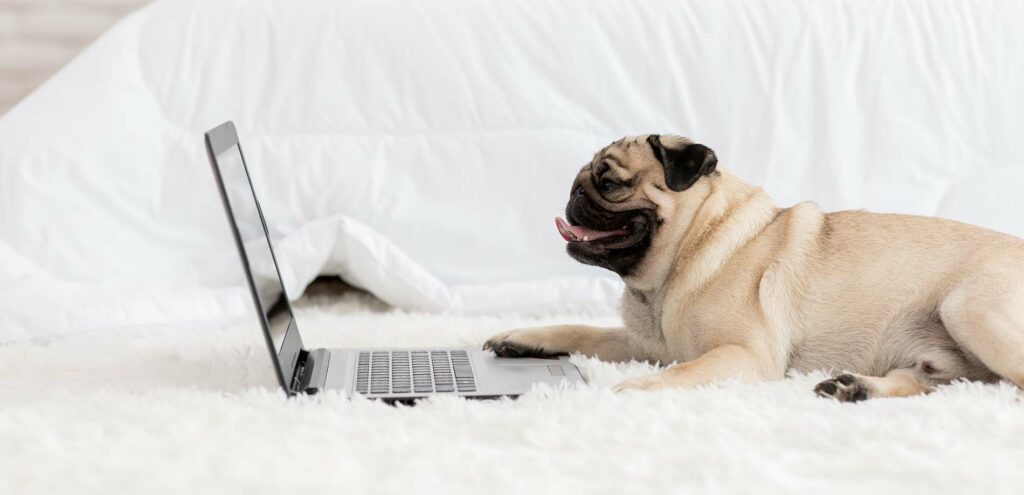

Whether you are a family of 5 or single, The Portuguese Water Dog or otherwise known as a “Portie” or PWD is a great dog for all, especially if you are active and love water activities. Closely related to the Spanish Water Dog or “Cao De Agua” (dog of the water) have a common ancestor with the Standard Poodle.
Originating from the Al Grave Region of Portugal the Portuguese Water Dog is a very intelligent, impetuous, docile, quarrelsome, brave, and obedient dog. They have a low-shedding coat of tight curls and are keen to please with high adaptability overall. PWDs are high-energy dogs with lots of enthusiasm and as their name suggests as well as their webbed feet, they love to play in the water, and their athleticism makes them always ready for exercise and activities. Typically the Portuguese Water Dog will intake roughly 2.5 – 3.5 cups of high-quality dog food daily. Originally bred to be a fisher men’s sidekick including herding fish into fishermen’s nets, retrieving broken nets, lost tackle, and moving things from boat to boat or even to the shore
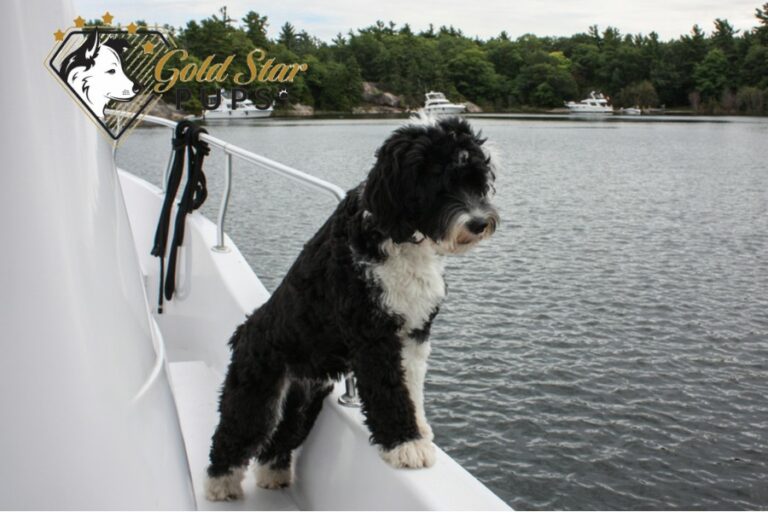
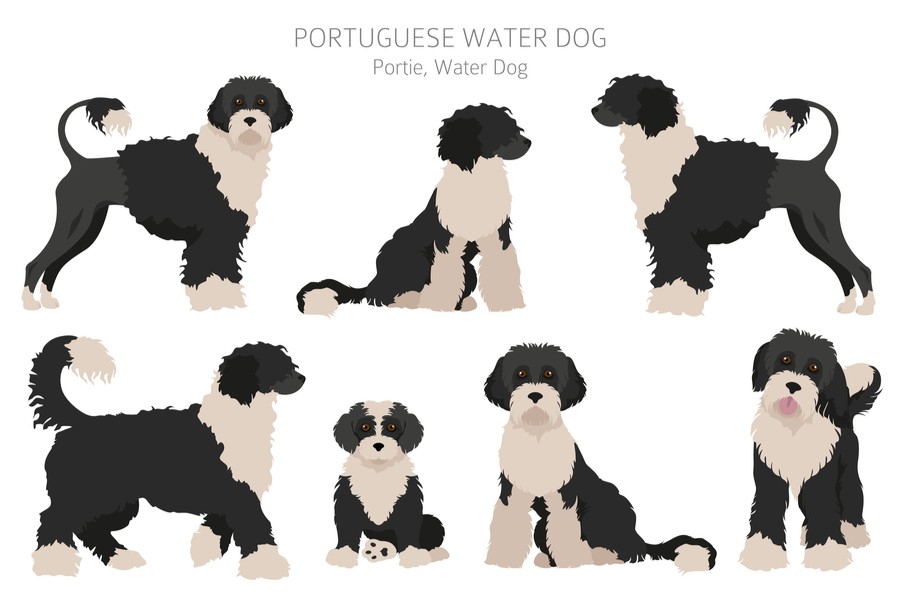
PWDs have a single-layered coat that does not shed, making their presence tolerable for people who suffer from dog allergies. People with dog allergies should still ask their doctor before considering the purchase of any dog.
The majority of Portuguese Water Dogs, are entirely black or black and white, brown, and silver-tipped; it is common to see white chest spots and white paws or legs on black or brown coated dogs. Parti or Irish-marked coats, with irregular white and black spots, are rare but visually striking. Parti dogs are becoming more common in the US. In Portugal, the breed standard does not allow more than 30% white markings. Overall, white is the least common coat color, while black with white markings on the chin or milk chin and the chest is the most common color.
The Portuguese Water Dog Club of America Revised Standard says this for the two coat types:
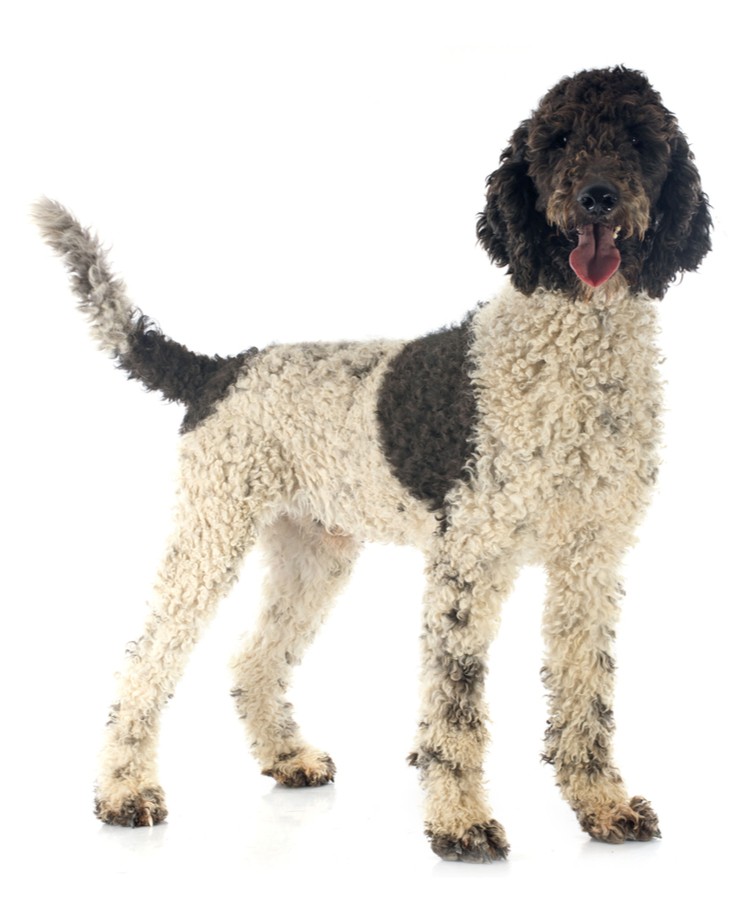
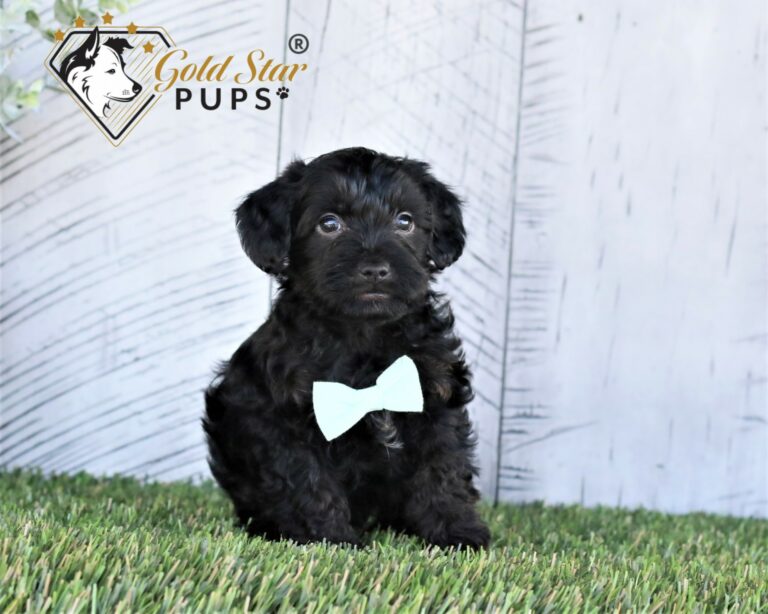
Without regular grooming, the hair on a Portie will keep growing indefinitely. Problems related to this include the hair around the eyes growing so long as to impair vision, and matting of the body causing skin irritations. For these reasons, it is important to get them groomed about every two months as well as brush the coat every other day.
The coat is usually worn in a “retriever cut” or a “lion cut”.
In the lion cut, the hindquarters, muzzle, and the base of the tail are shaved, with about 1/3 of the tail hair left long, also known as a flag, the rest of the body is left full length. This traditional cut originated with the fishing dogs of Portugal. The lion cut lessened the initial shock of cold water when jumping from boats, as well as providing warmth to the vitals. The hindquarters were left shaved for easier movement of the legs and the powerful tail.
The retriever cut is one inch long, evenly over the body. This cut is a more recent style and originated because breeders wanted to make the breed more appealing to buyers. Sometimes owners will clip the hair of their dogs very short, especially in the summer months, in modified retriever cut.
Portuguese Water dogs are loving, independent, and intelligent and are easily trained in obedience and agility skills. They are generally friendly to strangers and enjoy being petted.
They are working dogs, PWDs are generally okay being at their owner’s side, awaiting directions, and if they are trained, they are willing and able to follow difficult commands. They learn very quickly and enjoy the training, and have a long memory for the names of objects. These traits mean they excel at various service dog roles such as hearing dogs, and mobility dogs. They also make unusually good therapy dogs.
A Portie usually stays in proximity to its owners, both indoors and outdoors. Although very sociable animals, these dogs typically bond with one primary or alpha family member. This intense bonding arose in the breed because the dogs were selected to work in small fishing boats, unlike other working dogs such as herding dogs that range out to perform tasks. In any case, the modern PWD, whether employed as a working dog or kept as a pet the Portuguese Water Dog loves attention and prefers to be engaged in activity. This is not a breed to be left alone for long periods of time, indoors or out.
The PWD’s retrieving instinct is strong, which can give some chewing tendencies. Some PWDs may walk, hop, or dance on their hind legs when greeting or when excited. Some will stand upright at kitchen counters, especially if they smell food above. This is known as “counter surfing” and is a characteristic of the breed.
Because of their intelligence and working drive, they require regular exercise as well as mental challenges. They are gentle and patient—but not couch potatoes, and boredom can cause them to become destructive.
